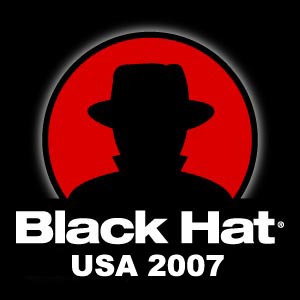
Black Hat Briefings, USA 2007 [Audio] Presentations from the security conference.
Jeff Moss
Past speeches and talks from the Black Hat Briefings computer security conferences. The Black Hat Briefings USA 2007 was held August 1-3 in Las Vegas at Caesars Palace. Two days, sixteen tracks, over 95 presentations. Three keynote speakers: Richard Clarke, Tony Sager and Bruce Schneier. A post convention wrap up can be found at http://www.blackhat.com/html/bh-usa-07/bh-usa-07-index.html Black Hat Briefings bring together a unique mix in security: the best minds from government agencies and global corporations with the underground's most respected hackers. These forums take place regularly in Las Vegas, Washington D.C., Amsterdam, and Tokyo Video, audio and supporting materials from past conferences will be posted here, starting with the newest and working our way back to the oldest with new content added as available! Past speeches and talks from Black Hat in an iPod friendly .mp4 h.264 192k video format. If you want to get a better idea of the presentation materials go to http://w
- 1 hour 13 minutesGadi Evron: Estonia: Information Warfare and Strategic LessonsIn this talk we will discuss what is now referred to as "The 'first' Internet War" where Estonia was under massive online attacks for a period of three weeks, following tensions with the local Russian population.
Following a riot in the streets of Tallinn, an online assault begun, resulting in a large-scale coordination of the Estonian defenses on both the local and International levels. We will demonstrate what in hind-sight worked for both the attackers and the defenders, as well as what failed. Following the chronological events and technical information, we will explore what impact these attacks had on Estonia's civil infrastructure and daily life, and how they impacted its economy during the attacks.
Once we cover that ground, we will evaluate what we have so far discussed and elaborate on lessons learned while Gadi was in Estonia and from the post-mortem he wrote for the Estonian CERT. We will conclude our session by recognizing case studies on the strategic level, which can be deducted from the incident and studied in preparation for future engagements in cyber-space.
Gadi Evron works for the Mclean, VA based vulnerability assessment solution vendor Beyond Security as Security Evangelist and is the chief editor of the security portal SecuriTeam. He is a known leader in the world of Internet security operations, and especially in the realm of botnets and phishing as well as is the operations manager for the Zeroday Emergency Response Team (ZERT). He is a known expert on corporate security and espionage threats. Previously Gadi was the Israeli Government Internet Security Operations Manager (CISO) and the Israeli Government CERT Manager which he founded.11 December 2007, 10:53 pm - 1 hour 12 minutesHD Moore & Valsmith: Tactical Exploitation-Part 2Penetration testing often focuses on individual vulnerabilities and services. This talk introduces a tactical approach that does not rely on exploiting known vulnerabilities. Using combination of new tools and obscure techniques, I will walk through the process of compromising an organization without the use of normal exploit code. Many of the tools will be made available as new modules for the Metasploit Framework.
REVIEWER NOTES: This is a monstrous presentation and will absolutely require the 150-minute time slot. For a smaller version of this presentation, please see my other submission (System Cracking with Metasploit 3). The goal of this presentation is to show some of the non-standard ways of breaking into networks, methods that are often ignored by professional pen-testing teams.11 December 2007, 9:59 pm - 2 days 9 minutesDanny Quist & Valsmith: Covert Debugging: Circumventing Software Armoring TechniquesSoftware armoring techniques have increasingly created problems for reverse engineers and software analysts. As protections such as packers, run-time obfuscators, virtual machine and debugger detectors become common newer methods must be developed to cope with them. In this talk we will present our covert debugging platform named Saffron. Saffron is based upon dynamic instrumentation techniques as well as a newly developed page fault assisted debugger. We show that the combination of these two techniques is effective in removing armoring from the most advanced software armoring systems. As a demonstration we will automatically remove packing protections from malware.9 January 2006, 11:10 pm
- 1 hour 11 minutesChris Palmer: Breaking Forensics Software: Weaknesses in Critical Evidence Collectiocross the world law enforcement, enterprises and national security apparatus utilize a small but important set of software tools to perform data recovery and investigations. These tools are expected to perform a large range of dangerous functions, such as parsing dozens of different file systems, email databases and dense binary file formats. Although the software we tested is considered a critical part of the investigatory cycle in the criminal and civil legal worlds, our testing demonstrated important security flaws within only minutes of fault injection.
In this talk, we will present our findings from applying several software exploitation techniques to leading commercial and open-source forensics packages. We will release several new file and file system fuzzing tools that were created in support of this research, as well as demonstrate how to use the tools to create your own malicious hard drives and files.
This talk will make the following arguments:
1. Forensic software vendors are not paranoid enough. Vendors must operate under the assumption that their software is under concerted attack.
2. Vendors do not take advantage of the protections for native code that platforms provide, such as stack overflow protection, memory page protection), safe exception handling, etc.
3. Forensic software customers use insufficient acceptance criteria when evaluating software packages. Criteria typically address only functional correctness during evidence acquisition when no attacker is present, yet forensic investigations are adversarial.
4. Methods for testing the quality of forensic software are not meaningful, public, or generally adopted. Our intention is to expose the security community to the techniques and importance of testing forensics software, and to push for a greater cooperation between the customers of forensics software to raise the security standard to which such software is held.
Chris Palmer is a security consultant with iSEC Partners, performing application penetration tests, code reviews, and security research.
Tim Newsham is a security consultant with iSEC Partners. He has over a decade of experience in computer security research, development and testing.
Alex Stamos is the co-founder and VP of Professional Services at iSEC Partners, a leading provider of application security services. Alex is an experienced security engineer and consultant specializing in application security and securing large infrastructures, and has taught multiple classes in network and application security.
He is a well-known researcher in the field of software security and has been a featured speaker at top industry conferences such as BlackHat, CanSecWest, DefCon, Toorcon, SyScan, Microsoft BlueHat, the Web 2.0 Expo, InfraGuard, ISACA and OWASP.
He holds a BS in Electrical Engineering and Computer Science from the University of California, Berkeley.
Chris K. Ridder is a Residential Fellow at Stanford Law School's Center for Internet and Society (CIS). His research interests include the full range of issues that arise at the intersection of technology and the law, including the application of intellectual property law to software and the Internet, and the impact of technological change on privacy and civil liberties. Prior to joining CIS, Chris was an associate at Fish & Richardson P.C. and subsequently Simpson Thacher and Barltett LLP, where he litigated a broad range of patent, intellectual property and complex commercial cases. From 2001-2002, he was a law clerk for the Honorable Mariana R. Pfaelzer of the U.S. District Court for the Central District of California. Chris received his J.D. from the University of California at Berkeley (Boalt Hall) in 2001. Before he went to law school, Chris was a newspaper editor and publisher where he served, among other positions, as Editor-in-Chief of the Anchorage Press, the largest weekly newspaper in Anchorage, Alaska.9 January 2006, 11:10 pm - 1 hour 13 minutesHaroon Meer & Marco Slaviero: It's all about the timingIt's all about the timing...
Timing attacks have been exploited in the wild for ages, with the famous TENEX memory paging timing attack dating back to January of 1972. In recent times timing attacks have largely been relegated to use only by cryptographers and cryptanalysts. In this presentation SensePost analysts will show that timing attacks are still very much alive and kicking on the Internet and fairly prevalent in web applications (if only we were looking for them). The talk will cover SensePost-aTime (our new SQL Injection tool that operates purely on timing differences to extract data from injectable sites behind draconian firewall rulesets), our new generic (timing aware) web brute-forcer and lots of new twists on old favorites.
If you are doing testing today, and are not thinking a lot about timing, chances are you are missing attack vectors right beneath your stop-watch!9 January 2006, 11:10 pm - 19 hours 18 minutesJerry Schneider: Reflection DNS PoisoningTargeting an enterprise attack at just a few employees seems to be yielding the best results, since it lowers the risk of discovering the exploit. Yet the typical DNS cache poisoning approach, aimed at various levels in the DNS server hierarchy or the enterprise server itself, is not as effective as it could be, primarily because so many people are affected that detection is rapid...
There is one approach to DNS cache poisoning that can control the attack surface and is particularly effective when executed from within the enterprise. Rather than attempting to poison the enterprise DNS server or other external caches, the internal DNS cache within a Windows PC is targeted. Additionally, forensic analysis of the infected PC is hindered by the TimeToLive and volatility of these cache entries.
I will demonstrate this type of attack using two machines on a local lan, and include some analysis of the firewall and configuration issues needed to defend against this type of exploit.9 January 2006, 11:10 pm - 20 hours 4 minutesDave G & Jeremy Rauch: Hacking CapitalismThe financial industry isn't built on HTTP/HTTPS and web services like everything else. It has its own set of protocols, built off of some simple building blocks that it employs in order to make sure: that positions are tracked in real time, that any information that might affect a traders action is reliably received, and that trades happens in a fixed timeframe.
Unlike the protocols that comprise the internet as a whole, these haven't been scrutinized to death for security flaws. They're written with performance in mind and security is often just an afterthought, if present at all. And there are dozens of them, with names you may have never heard of before...
This talk will discuss the security implications of the protocols and technologies used by the financial industry to maintain the beating heart of capitalism. We'll take a look at some of the most popular protocols used by financials to execute billions (trillions!) of dollars worth of trades, discuss the flaws inherent in them, some of the implementation flaws in them, and discuss how hiding your money under your mattress might not be the worst idea.
Jeremy Rauch
For over 10 years Jeremy Rauch has been at the forefront of information security. An original member of the ISS X-Force and a co-founder of SecurityFocus, Jeremy is the discoverer of numerous security vulnerabilities in widely-deployed commercial products. Jeremy is also a former principal engineer for optical switching at Tellium.9 January 2006, 11:10 pm - 1 hour 9 minutesPeter Thermos: Transparent Weaknesses in VoIPThe presentation will disclose new attacks and weaknesses associated with protocols that are used to establish and protect VoIP communications. In addition, a newer "unpublished" version of the SIVuS tool will be demoed.9 January 2006, 11:10 pm
- 1 hour 3 minutesDamiano Bolzoni & Emmanuel Zambon: Sphinx: an anomaly-based Web Intrusion Detection SystemWe present Sphinx, a new fully anomaly-based Web Intrusion Detection Systems (WIDS). Sphinx has been implemented as an Apache module (like ModSecurity, the most deployed Web Application Firewall), therefore can deal with SSL and POST data. Our system uses different techniques at the same time to improve detection and false positive rates. Being anomaly-based, Sphinx needs a training phase before the real detection could start: during the training, Sphinx ?learns? automatically the type of each parameter inside user requests and applies the most suitable model to detect attacks. We define 3 basic types: numerical, short and long texts. The idea behind this is that, e.g., if we observe only integer values and later some text, that is likely to be an attack (e.g. SQL Injection or XSS).
For numerical parameters, a type checker is applied. For short texts (text with fixed length or slight variations), Sphinx uses a grammar checker: grammars are built observing the parameter content (during the training phase) and then used to check the similarity of new content during detection. Long texts are typically e-mail/forum messages, which change often their length and would produce infeasible grammars. For this kind of content we use a modified version of our NIDS POSEIDON, using n-gram analysis.
Furthermore, Sphinx can actively support the deployment of WAFs like ModSecurity: e.g. if we are deploying an ad hoc web application, most probably we need to spend a lot of time on writing signatures (or when 3rd parties? software is used). Once Sphinx accomplishes the training phase, it can automatically generates ModSecurity-style signatures for numerical and (some) short-text parameters, making the deployment much easier.9 January 2006, 11:10 pm - 1 hour 14 minutesYoriy Bolygin: Remote and Local Exploitation of Network DriversDuring 2006 vulnerabilities in wireless LAN drivers gained an increasing attention in security community. One can explain this by the fact that any hacker can take control over every vulnerable laptop of entire enterprise without any "visible" connection with those laptops and execute a malicious code in kernel.
This work describes the process behind hunting remote and local vulnerabilities in wireless LAN drivers as well as in other types of network drivers. The first part of the work describes simple and much more advanced examples of remote execution vulnerabilities in wireless device drivers that should be considered during quest for vulnerabilities. We demonstrate an example design of kernel-mode payload on Windows and construct a simple wireless frames fuzzer. The second part of the work explains local privilege escalation vulnerabilities in I/O Control device driver interface on Windows, introduces a technique to uncover them and IOCTLBO fuzzer implementing this technique. Third part of the work describes specific examples of local vulnerabilities in network drivers that can be exploited remotely and introduces an exploitation technique. In the last part of the work we present case studies of remote and local vulnerabilities mitigated in Intel Centrino wireless LAN drivers. The work concludes discussing vulnerabilities in other types of network drivers.9 January 2006, 11:10 pm - 1 hour 20 minutesRohyt Belani & Keith Jones: Smoke 'em Out!Tracing a malicious insider is hard; proving their guilt even harder. In this talk, we will discuss the challenges faced by digital investigators in solving electronic crime committed by knowledgeable insiders. These challenges will be presented in light of three real world investigations conducted by the presenters. The focus of this talk will on the technicalities of the attacks, the motivation of the attackers, and the response techniques used by the investigators to solve the respective crimes.
The first case is the high-profile U.S. v Duronio trial, in which Keith Jones testified as the DoJ?s computer forensics expert. Mr. Jones testified for over five days about how Mr. Duronio, a disgruntled employee, planted a logic bomb within UBS?s network to render critical trading servers unusable. His testimony was key in the prosecution of the accused on charges of securities fraud and electronic crime. Mr. Jones will present the information as he did to the jury during this trial.
The second incident involved a recently fired employee at a large retail organization. The irked employee made his way from a store wireless network into the company's core credit card processing systems. The purpose of the attack was to malign the company?s image by releasing the stolen data on the Internet. We will discuss the anatomy of the "hack", the vulnerabilities exploited along the way, and our sleepless nights in Miami honing in on the attacker.
The final case presented will focus on the technicalities of web browser forensics and how it facilitated the uncovering of critical electronic evidence that incriminated a wrong-doer, and more importantly freed an innocent systems administrator at a law firm from being terminated and facing legal music.
The common thread in all these cases - a malicious insider!9 January 2006, 11:10 pm - More Episodes? Get the App
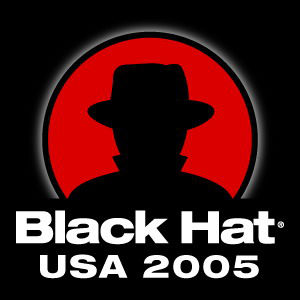 Black Hat Briefings, Las Vegas 2005 [Video] Presentations from the security conference
Black Hat Briefings, Las Vegas 2005 [Video] Presentations from the security conference
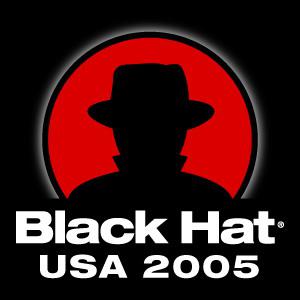 Black Hat Briefings, Las Vegas 2005 [Audio] Presentations from the security conference
Black Hat Briefings, Las Vegas 2005 [Audio] Presentations from the security conference
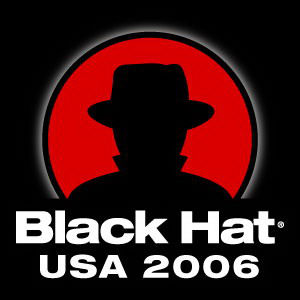 Black Hat Briefings, Las Vegas 2006 [Audio] Presentations from the security conference
Black Hat Briefings, Las Vegas 2006 [Audio] Presentations from the security conference
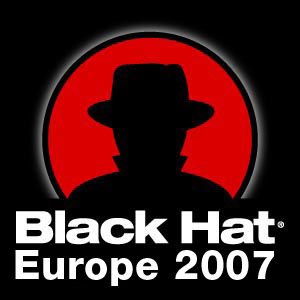 Black Hat Briefings, Europe 2007 [Audio] Presentations from the security conference.
Black Hat Briefings, Europe 2007 [Audio] Presentations from the security conference.
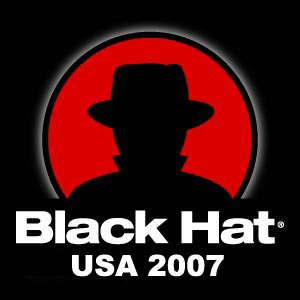 Black Hat Briefings, USA 2007 [Video] Presentations from the security conference.
Black Hat Briefings, USA 2007 [Video] Presentations from the security conference.
Your feedback is valuable to us. Should you encounter any bugs, glitches, lack of functionality or other problems, please email us on [email protected] or join Moon.FM Telegram Group where you can talk directly to the dev team who are happy to answer any queries.